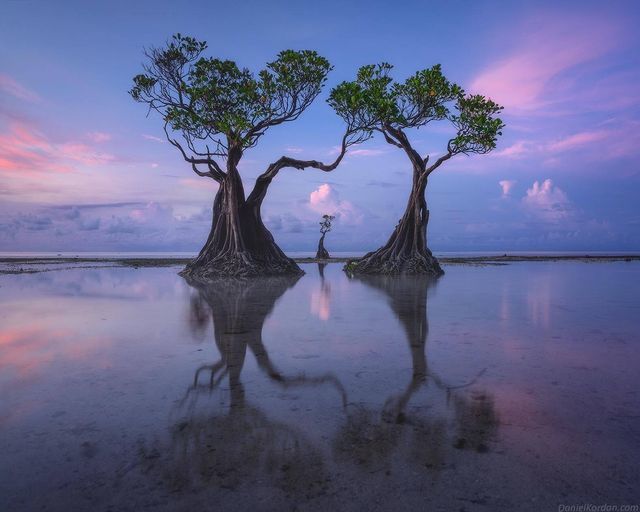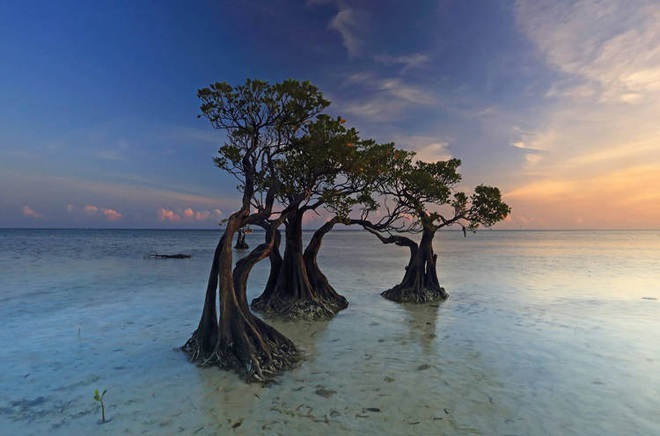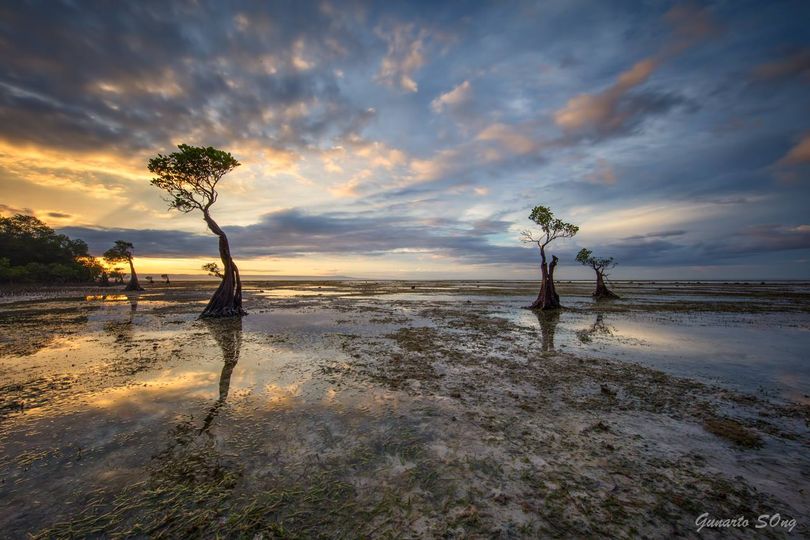Calm waters and pristine white sandy beaches await at Walakiri Beach, a top attraction on the island of Sumba, Indonesia. While these features are indeed captivating, they are not the sole reason why visitors are drawn to this idyllic tropical paradise.

What attracts visitors from all over the world to Walakiri are the dozens of uniquely shaped mangroves that line the beach, which locals call “dancing trees.” The reason for their name is because the tree trunks have a curved and curving shape as if they are swaying with the sun when the sunset falls.


According to scientists, plants growing in mangroves or in areas covered by water often have a rather strange shape and do not follow any rules. The reason is that the water surface reflects sunlight at different angles, causing the plants to grow unevenly.
Botanists call this phenomenon “phototropic” plants because of the influence of the plant hormone auxin, and they will grow toward the light at the beginning of their life cycle.

Furthermore, the ecological environment of mangroves is a transitional environment between sea and land. Therefore, the existence, distribution, development and species composition of mangroves are influenced by many factors such as climate, hydrology, salinity, substrate… which have not been evaluated so far. Their importance, as well as their influence on plant growth, cannot be assessed or affirmed.

Many professional and amateur photographers from around the world have come to Walakiri in the hope of capturing a perfect image of the “dancing” trees. The beautiful natural scenery featured in the photographs makes it easy for viewers to understand why. The way they gently sway under the evening sun, if viewed from the right angle, will almost look like dancing silhouettes in a very appealing way.
“The dancing trees of Sumba Island provide an endless source of creativity. I hope that local people will protect this place or create a reserve, a national park,” said Daniel Kordan, a wildlife photographer.

Like other mangrove forests, the “dancing” forest has the effect of reducing erosion and protecting the soil in the coastal zone from the influence of waves. In addition, they also help filter eutrophication, sediments and pollution from oceans and rivers, thus contributing to purifying water for the surrounding ecological systems.





